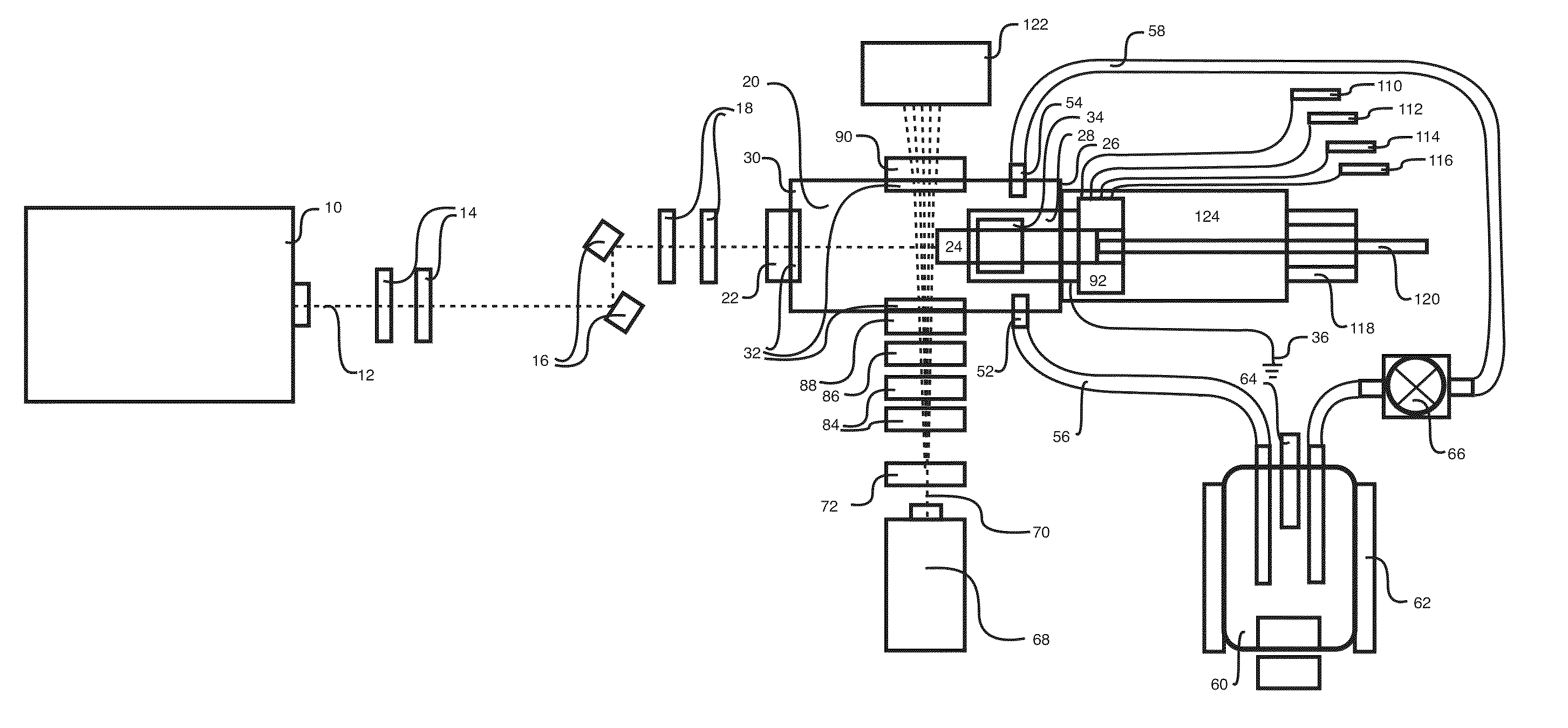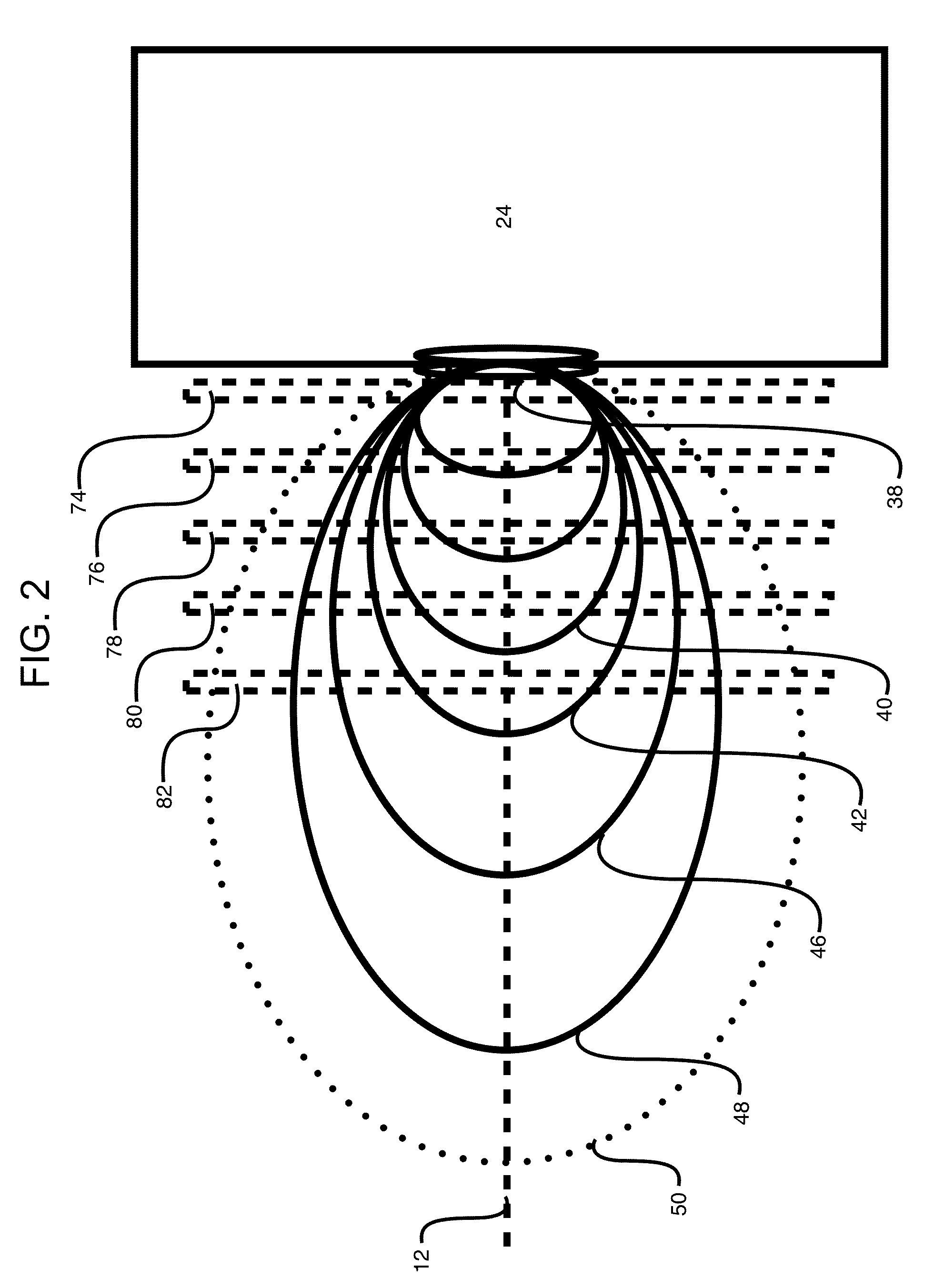Method and apparatus for production of uniformly sized nanoparticles
a technology of uniform size and nanoparticles, applied in the field of uniform size nanoparticles preparation processes and equipment, can solve the problems of insufficient heat generation and ion formation of metallic targets, and achieve the effect of short tim
- Summary
- Abstract
- Description
- Claims
- Application Information
AI Technical Summary
Benefits of technology
Problems solved by technology
Method used
Image
Examples
example 1
[0069]A Ag target was held within a chamber through which flowed triple distilled deionized water. The Ag target was ablated using a primary laser with a 1064 nm wavelength at 80 mJ with a 1 mm focal spot size and with 9 nanosecond pulse lengths. The secondary laser was a continuous 532 nm laser with 0.5 W power going into the diffraction grating which created three distinct electromagnetic fields in front of the Ag target. The process created 10 nm diameter Ag spheres with 99+% of those spheres within ±1 nm diameter.
example 2
[0070]A Ag target was held within a chamber through which flowed triple distilled deionized water. The Ag target was ablated using a primary laser with a 1064 nm wavelength at 620 mJ with a 6 mm focal spot size and with 3.7 nanosecond pulse lengths. The secondary laser was a continuous 532 nm laser with 0.5 W power going into the diffraction grating which created five distinct electromagnetic fields in front of the Ag target. The process created 14 nm diameter Ag spheres with 99+% of those spheres within ±1 nm diameter.
example 3
[0071]A Ag anode wire target was ablated through a high voltage (800 V) between the target anode and a grounded Ag cathode both were submerged into a chamber through which flowed triple distilled deionized water. The secondary laser was a continuous 1064 nm laser with 5 W power that was not divided with any diffraction grating optics. The process created 10 nm diameter Ag spheres with 99+% of those spheres within ±1 nm diameter.
PUM
| Property | Measurement | Unit |
|---|---|---|
| size distribution | aaaaa | aaaaa |
| size distribution | aaaaa | aaaaa |
| diameter | aaaaa | aaaaa |
Abstract
Description
Claims
Application Information
 Login to View More
Login to View More - R&D
- Intellectual Property
- Life Sciences
- Materials
- Tech Scout
- Unparalleled Data Quality
- Higher Quality Content
- 60% Fewer Hallucinations
Browse by: Latest US Patents, China's latest patents, Technical Efficacy Thesaurus, Application Domain, Technology Topic, Popular Technical Reports.
© 2025 PatSnap. All rights reserved.Legal|Privacy policy|Modern Slavery Act Transparency Statement|Sitemap|About US| Contact US: help@patsnap.com



